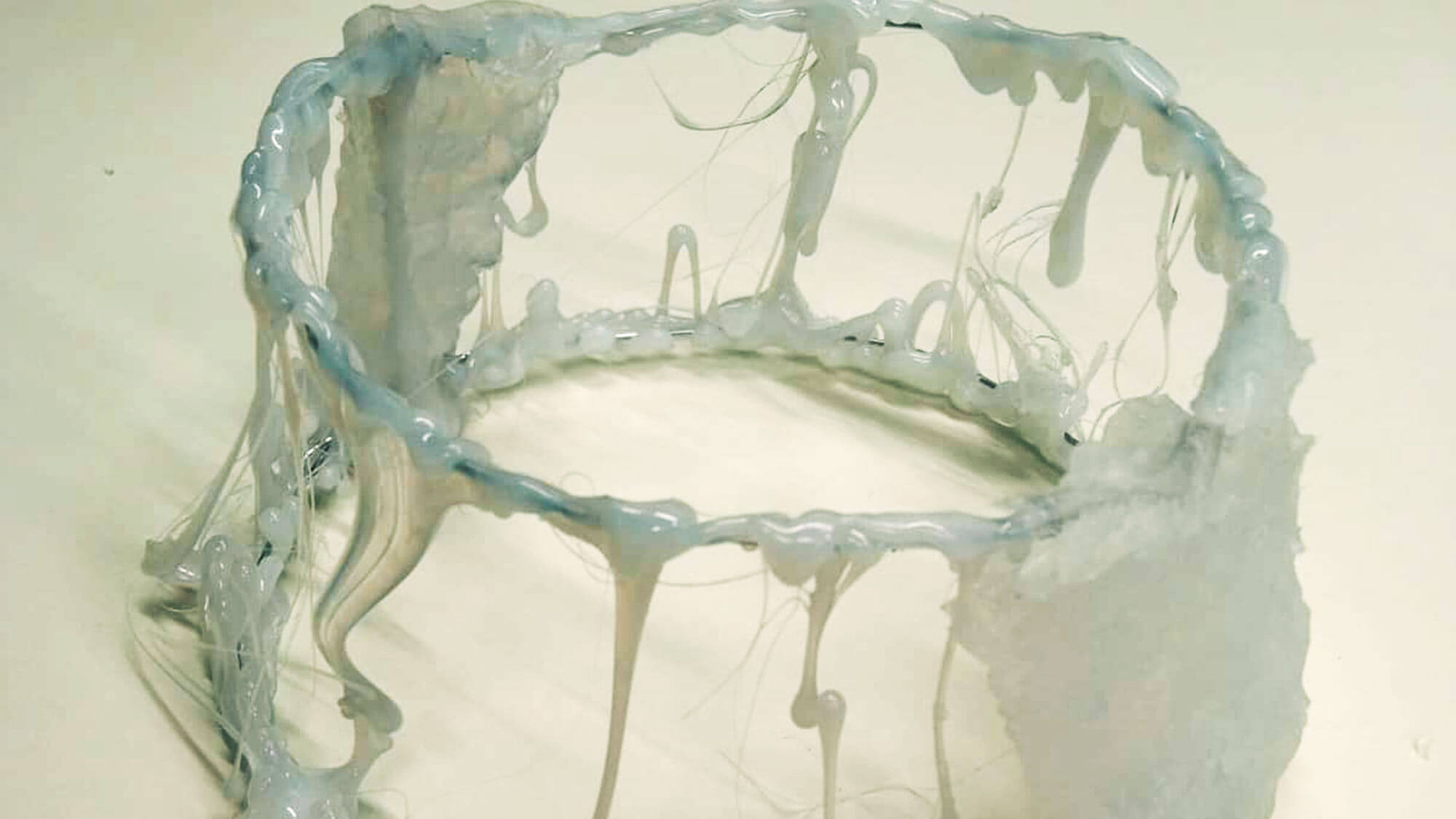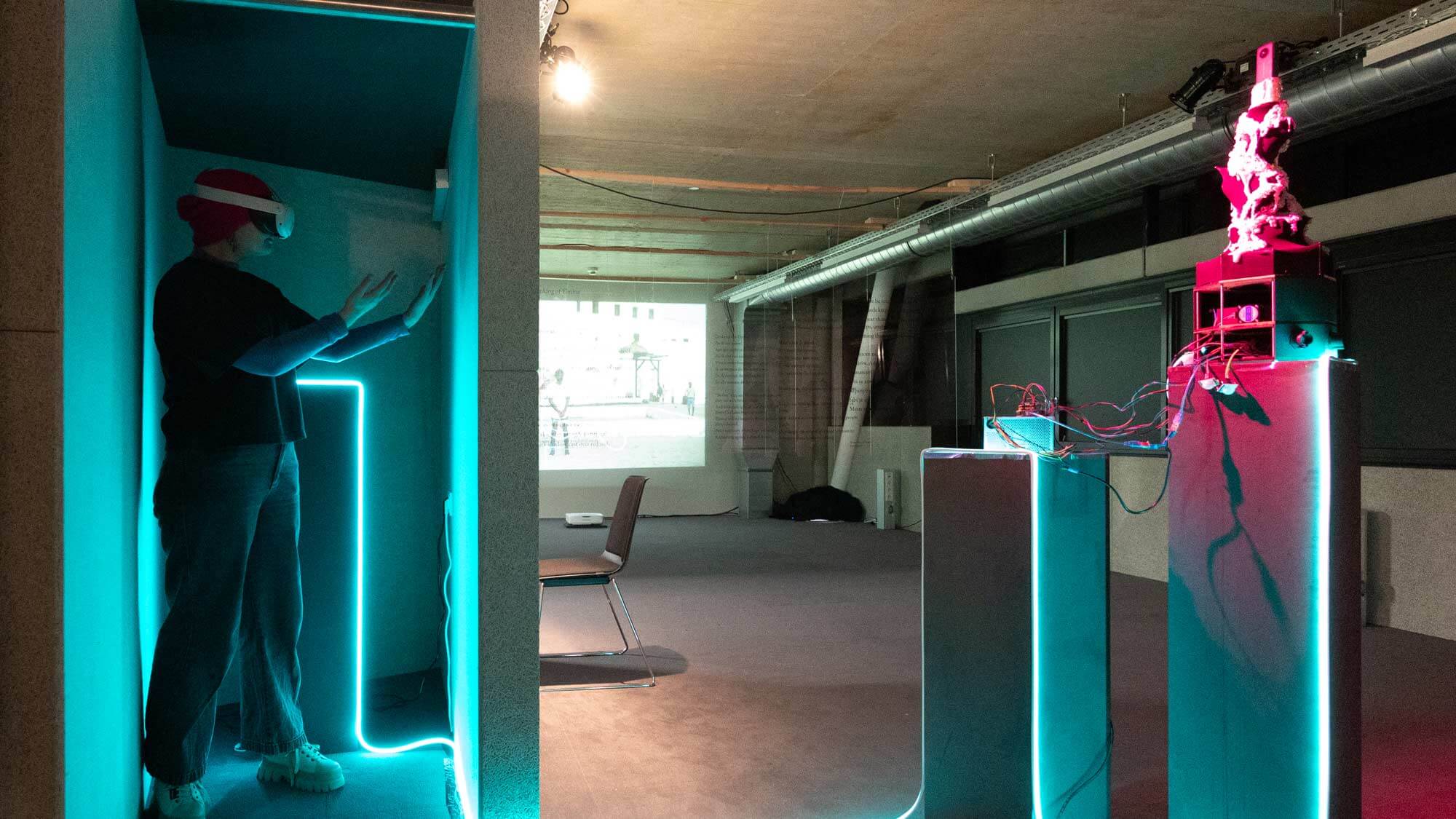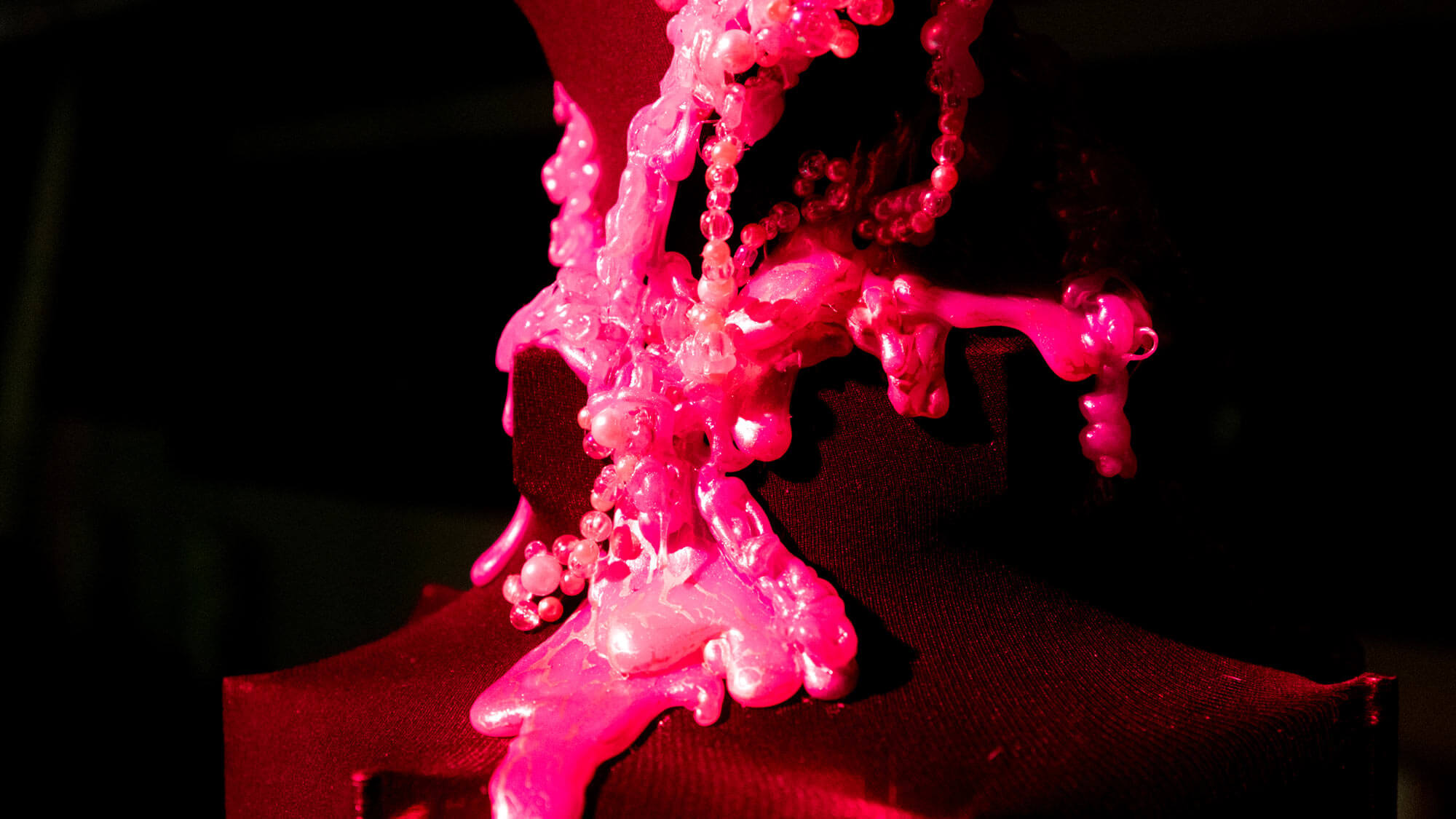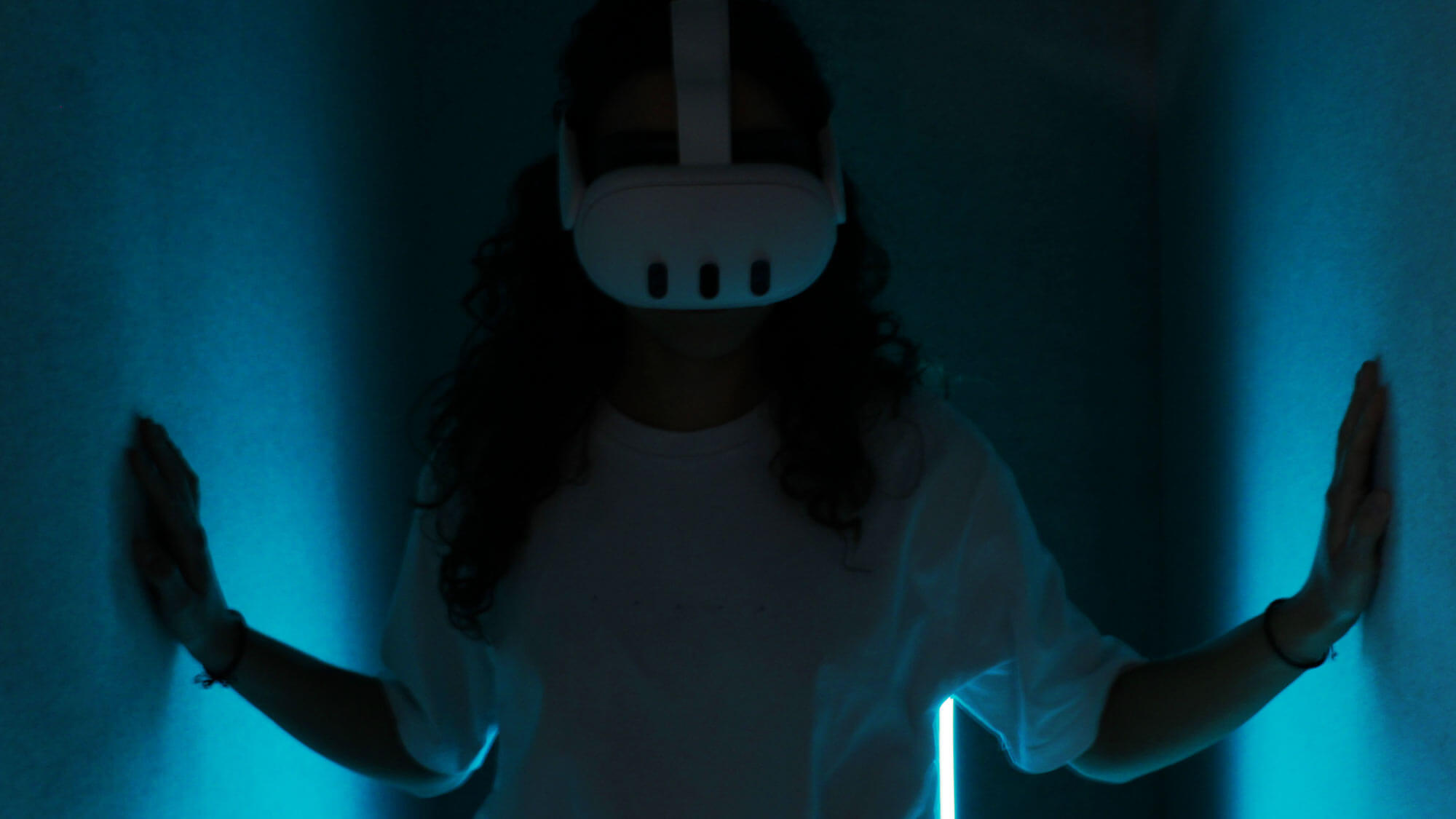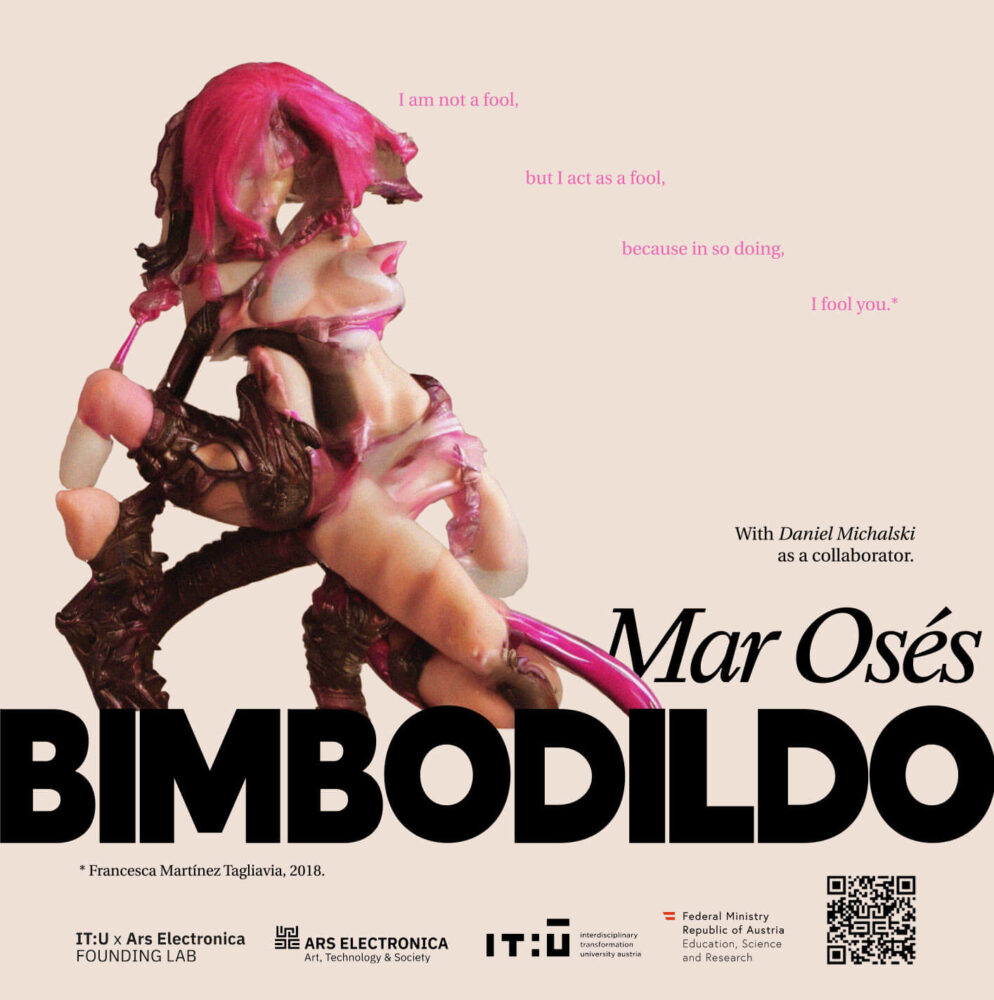
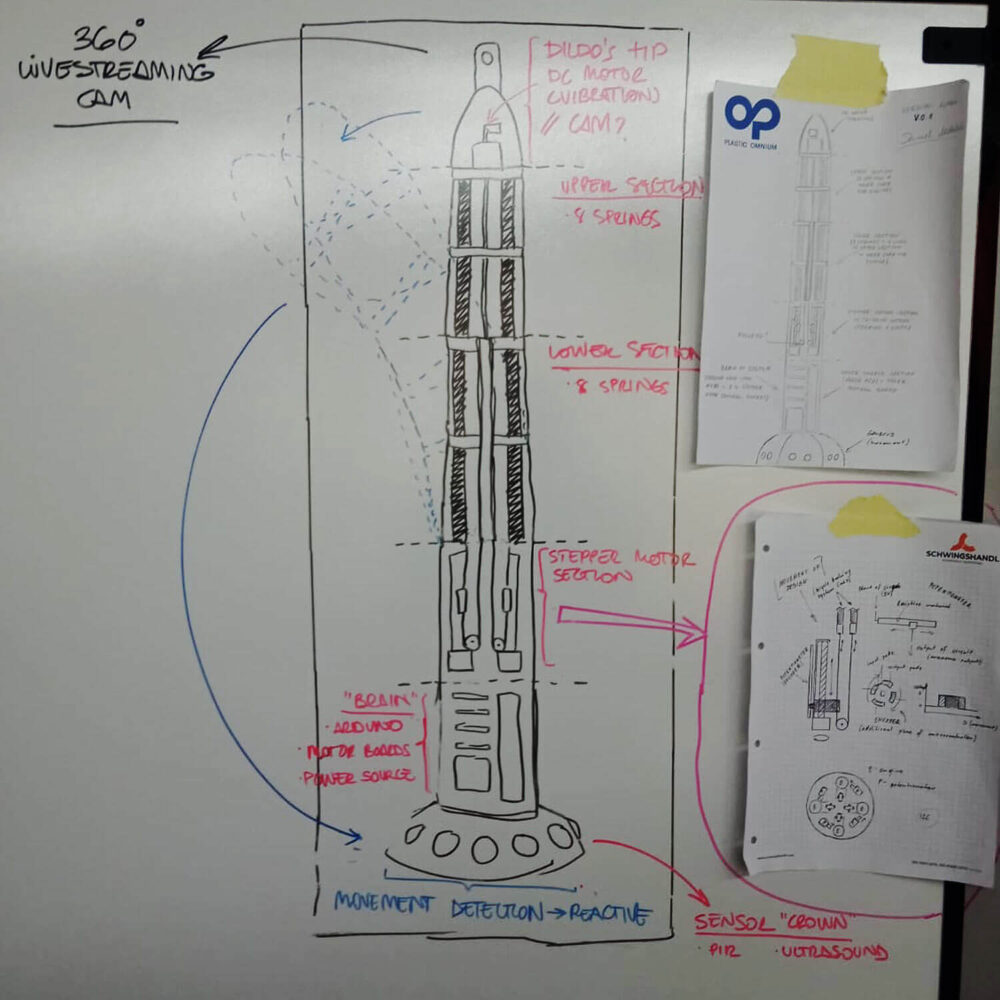
Bimbo Dildo
by
Mar Osés
Concept
In the realm of gender performance, adopting a hyperfeminine role has been proven to be a sign of resilience against deep-rooted misogynistic prejudice. In this sense, the Bimbo Dildo. Prototyping of penetration technologies (2022-2023) project discusses the self-sexualization and embracing of hyperfeminine codes that take place through the reappropriation of the bimbo stereotype, presented via the image of the dildo. This concept is used building upon Paul B. Preciado’s theoretical framework in Countersexual Manifesto (2018) as it explores the notion of dildo from a polyhedric perspective: considering all its symbolic, artistic, technological and sexo-political possibilities.
The project suggests reinterpreting the exaggeration of the stereotype/gender performance as a method of infiltration, subversion, and penetration (this is a paradoxical game of oxymorons because the concept traditionally aligns with the phallus and its strongly masculinized character) while bimbos subjects have demonstrated they have the power of transforming the subjectivity of those who interact with them from within and function as a clear example of body modification.
Embarking from this theoretical framework, the diy bimbo dildo is presented as a symbolic-operative object for pleasure and gender disruption. Prior to my participation in this programme, the dildos I had produced served as symbols that represented the bimbo penetration technique in a more inconspicuous way and which harboured a high degree of diy potential, urging the audience interacting with them to craft their own bimbo devices for self-pleasure, the dismantling of gender binarism and the penetration of other people’s subjectivities. These previous iterations of diy dildos were constructed using basic physical computation knowledge and components, such as vibration motors or pushbuttons, and the information provided by the online diy sex toys communities. A web of collective wisdom was proposed through the distribution of physical copies of a “Bimbo Dildo” zine during the showcasing of these prototypes (for example, in the Arse Electronika “Sexponential” venue, Ars Electronica 2023). This manual offered detailed, step-by-step instructions and coding guidance for building one’s own dildo, thereby fostering a collaborative knowledge-sharing network.
Alternatively, during the FOUNDING LAB Fall Term program, Bimbo Dildo has culminated in the production of a more mechanically ambitious proposal. This prototype features three key dimensions: an internal movement system derived from mechanical engineering, a hyper-feminine exterior crafted with artistic expertise, and, for the first time in this project, the usage of Virtual Reality and 360º video. These two elements are used to visually represent the agency in bimbo gender performance, by offering a metaphorical insight into this system’s perception that can be experienced by the audience firsthand through VR. In this exercise of repositioning, traditional dichotomous roles associated with hyperfemininity, such as consumption versus objectification or passivity as opposed agency, are blurred.
Process Reflection
Previous iterations of diy bimbo dildos had been developed during my research on this topic, but in the context of the FOUNDING LAB Fall Term, and with the support of my collaborator Daniel Michalski, the project aimed to develop an enhanced version of a dildo which would help us to rethink gender performance from a broader perspective, and through a new set of similes. With the resources and collective wisdom available through the FOUNDING LAB team, alongside insights from peers and fellows, this project found its way into exploring the construction of a Bimbo Dildo that embodies greater agency. This text primarily focuses on the development of the internal system of this prototype, as opposed to elements such as its hyperfeminine exterior or the use of VR.
In its initial stages, the prototyping of this Bimbo Dildo involved an assessment of the most desirable features to equip the system with, such as the ability of the dildo to sense movement (e.g. using PIR sensors) and its reactivity to such presence of the public. The final design, refined and brought to fruition through the valuable insights and mechanical engineering training of my collaborator, Daniel Michalski, incorporated four NEMA motors. Through a threaded system, these motors manipulated the four axes of a core spring, which served as the backbone of the dildo itself.
During the implementation phase, incremental modifications were accommodated to overcome system performance challenges (such as limiting the range of data the sensors could collect or using strong thread instead of the first alternative, less flexible metallic cables). Designing and 3D printing specific components was essential for constructing the structure, including the motor housing, the double-height base walls, and the support structure for the core spring. Chiara Croci, a key member of the FOUNDING LAB team, provided essential support with her in-depth 3D printing knowledge, crucial for the successful production of these pieces.
Efficiently powering the two microcontrollers responsible for controlling the motors and sensors was a major challenge. To address this, we acquired a second-hand PC and repurposed its components, primarily reusing its power source and wiring. This approach not only provided an effective solution but also aligned with sustainable practices by utilizing existing technology, while other parts of the PC were also allocated for reuse in future projects, in a commitment to resourcefulness.
The process of building this more ambitious system gave me a broader skillset in terms of design, mechanical engineering and programming. Nonetheless, while significant progress was made in regards of endowing Bimbo Dildo prototypes with more agency, there remains untapped potential in the motor and string system used, suggesting that with further time and exploration, we could further elaborate on its range of possibilities, not only as an effective mechanical system but as a symbolic machine. Therefore, this prototype lays a promising foundation for future research on user-level designing and hacking of digital technologies.
Within the framework of the Bimbo Dildo research project, this prototype represents a significant advancement in building experimental dildos for gender disruption. It is not only proof of successful transdisciplinary collaboration in terms of infrastructure and design achievements, but particularly, regarding personal growth and community building. Insights of my colleagues, Dimitris Mertzos, Amanda Benetts and Nathan Cornish, with whom I had the pleasure of sharing the studio on-site, as well as the mentoring of Regina Sipos were crucial to keep this project evolving, but ultimately the most fulfilling aspect of this experience was the knowledge and perspective exchange that took place among every participant, encompassing students, fellows, and team members.

